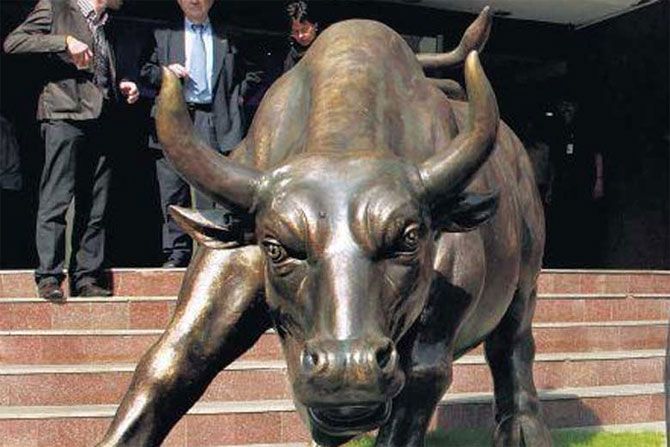'What the market expects to see in Indonesia this year is what the market was hoping to see in India 12 months ago - implementation of reforms, higher growth and better valuations.'
'For this rally to sustain for months and quarters, we need to see stronger growth, particularly in China, a pick-up in margins and profitability in EMs in general.'

The long-term sustainability of the ongoing market rally is difficult as earnings growth remains a challenge, says Herald Van Der Linde, bottom, left, head of equity strategy, Asia-Pacific, at HSBC, the London-headquartered banking and financial services entity. He tells Samie Modak there could be more downgrades here. Excerpts:
What led to the upsurge in the market this month?
A number of factors have helped equities, in India and the rest of the world. There are four key reasons. One, weakness in the dollar and the prospects of no further rate increases in 2016.
The second reason is that commodity prices have bounced back, not only oil but soft commodities like soyabean.
 Third, a more pro-active policy of initiatives towards growth, particularly in China. The monetary policies in Indonesia and China have entered looser territory. Last, the valuations had become quite low.
Third, a more pro-active policy of initiatives towards growth, particularly in China. The monetary policies in Indonesia and China have entered looser territory. Last, the valuations had become quite low.
Emerging markets have entered bull market territory. Is the rally overdone?
There could be a bit more steam. Policy makers in a variety of EMs were in hard landing scenarios. Most of that is avoided. For this rally to sustain for months and quarters, we need to see stronger growth, particularly in China, a pick-up in margins and profitability in EMs in general.
That is difficult to come by. Therefore, there are limits to this rally. To sustain beyond those limits, we need to see profitability in Asia improving but I don’t see any signs of that at the moment.
What is your view on the Indian market in particular?
It has bounced back quite strongly. One overriding worry is not so much the politics but the high earnings expectations. These are still unrealistically high. The India market has come down quite considerably over the past 12 months and looks cheaper. Still, as we go into the next reporting season, there could be more earnings downgrade.
In the December quarter, India was the country with the largest downgrade. In the coming results season, there could be more. The valuations at this particular time are still not attractive enough to say we need to go into Indian equities.
The banking system is clogged with bad loans; demand for credit is not very high. The government and the central bank are trying to resolve this but that doesn’t give much confidence that it will lead to earnings growth.
India has been the most attractive market in the region in recent years. Does this still hold true?
India has been the largest overweight position for global funds that invest in Asia and EMs. That is already on its way down and might continue. We are seeing growing appetite for Korea and also (the) Asean (bloc). It doesn’t mean investors start selling India but it could get a relatively small portion of incremental flows coming into emerging markets.
Have you set any target for the Indian market?
For the Sensex, a little over 26,000. We have been telling people there might not be much upside in India. Other markets offer more upside, where we see earnings upgrades coming through, where valuations are lower and implementation of policy is much better.
What the market expects to see in Indonesia this year is what the market was hoping to see in India 12 months ago - implementation of reforms, higher growth and better valuations. That might unfold in Indonesia this year but has not yet been realised in India.
The earnings growth expectations have to be much more realistic. At the moment, the consensus is looking at 17 per cent earnings growth in 2016-17. For us, five or six per cent looks more reasonable. So, if we see significant downgrades, that could be a time to take a relook at the Indian market.












 © 2025
© 2025